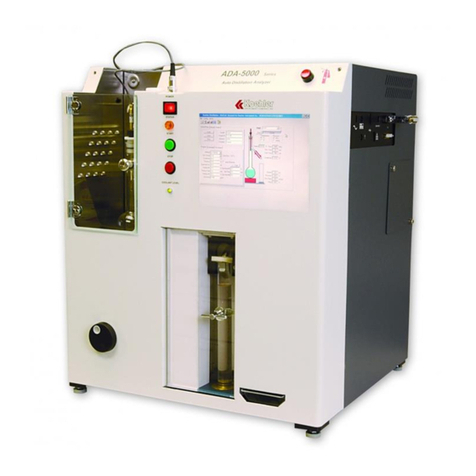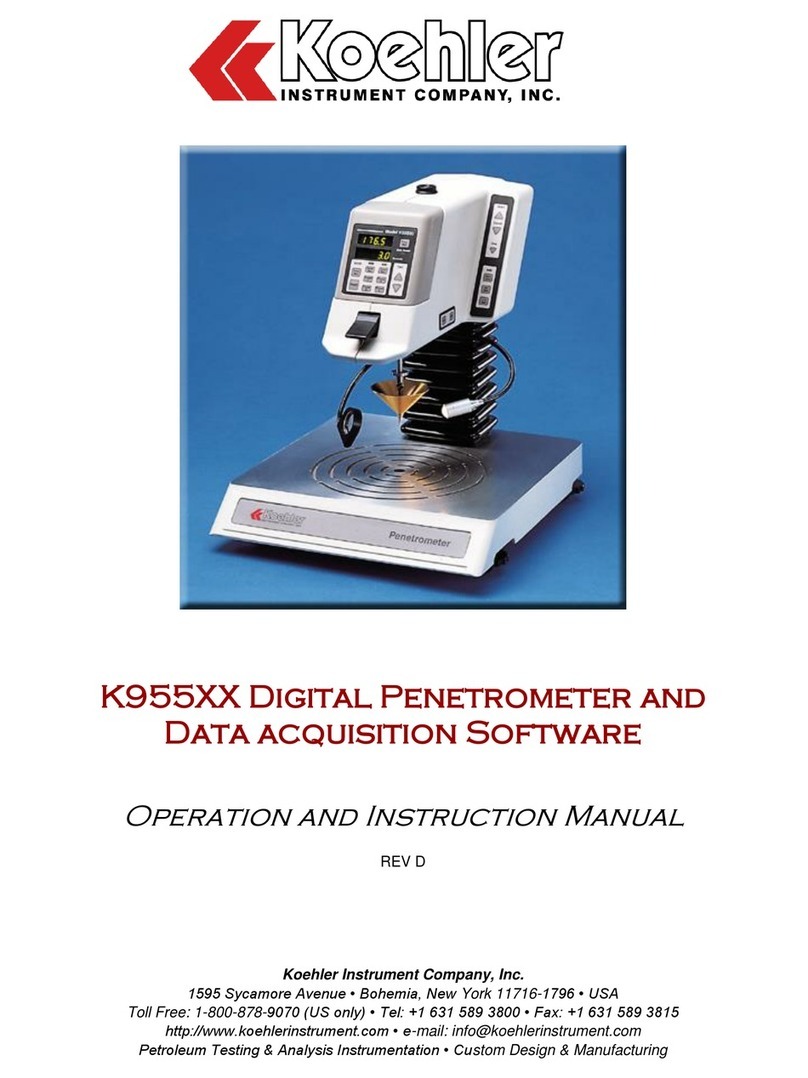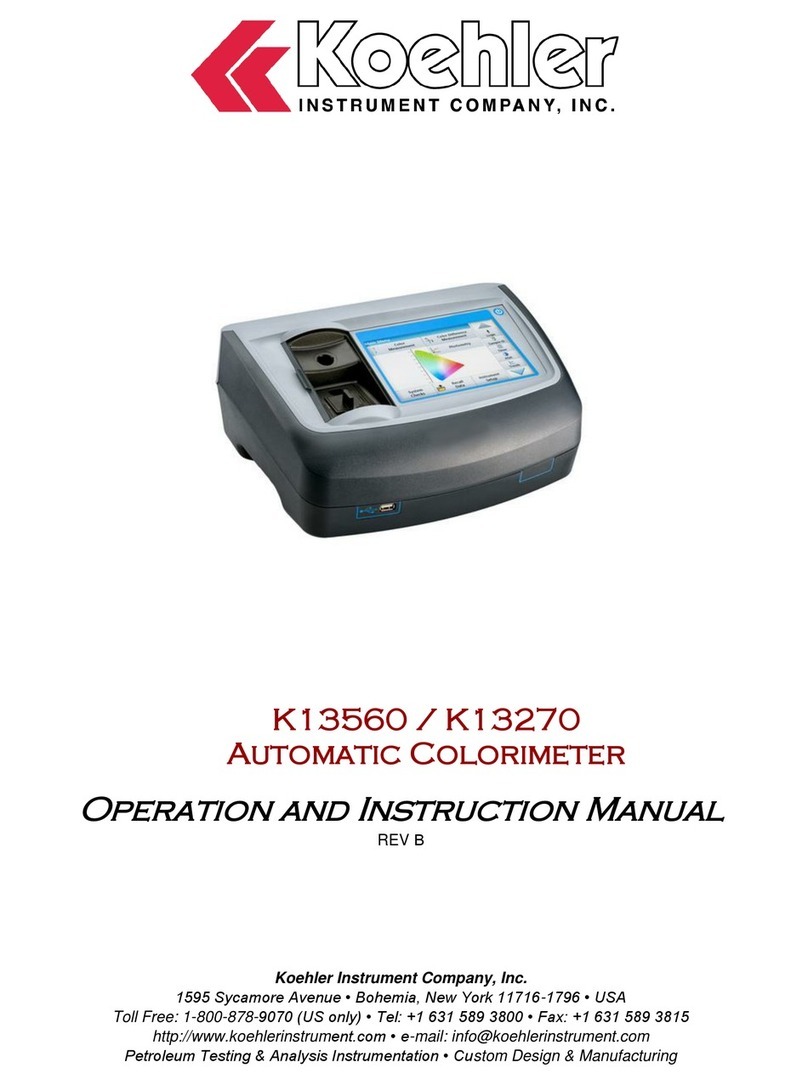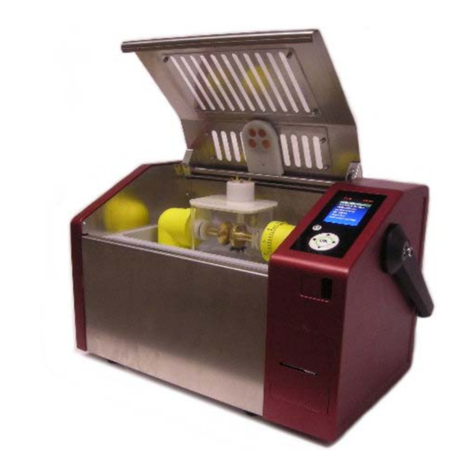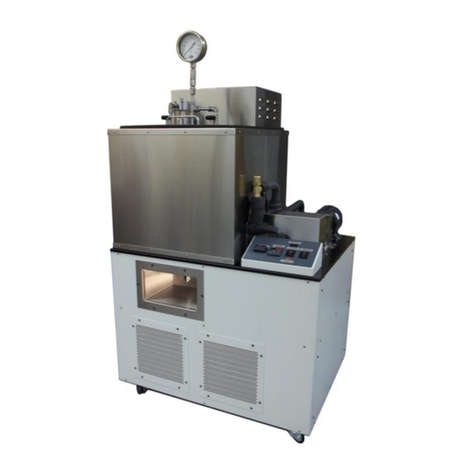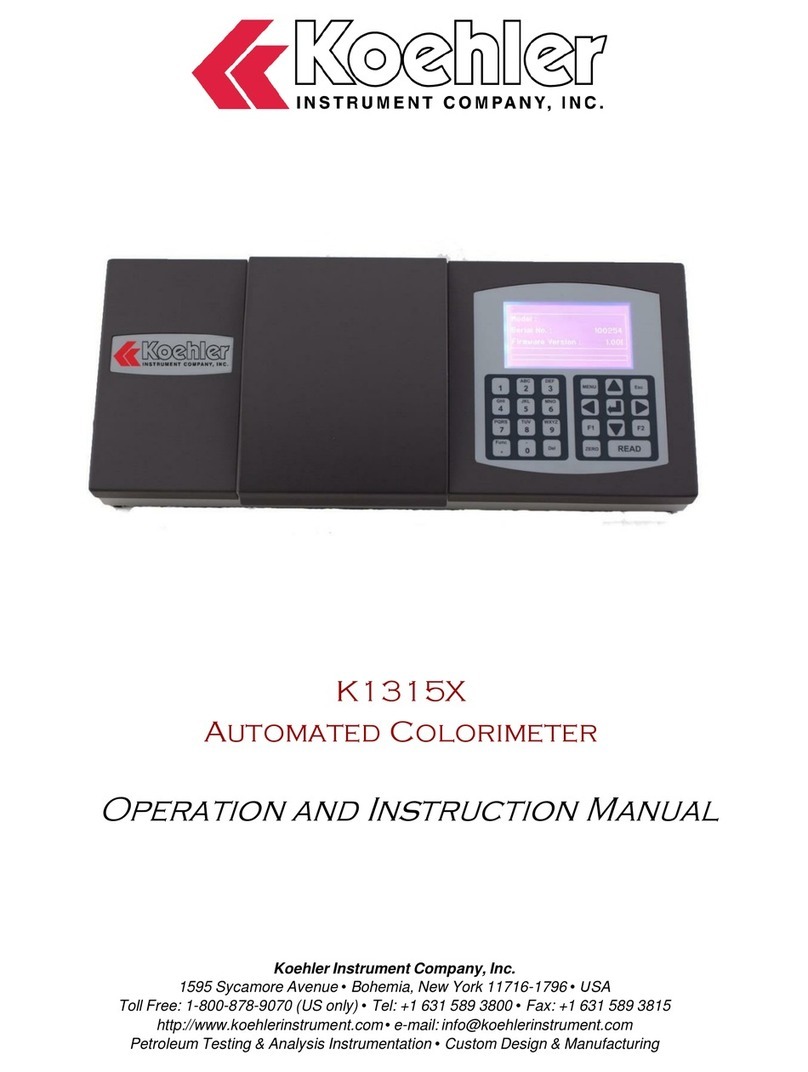
K71000 Automatic PMCC Flash Point Analyzer
Operation and Instruction Manual
K71000-Manual -5-
1 Introduction
The Koehler model K71000 Automated
Pensky-Martens Closed Cup Flash Point
Analyzer is the latest design for performing the
ASTM D93 test method and related test
specifications.
The K71000 determines the flash points of
distillate fuels (diesel, biodiesel blends,
kersosene, heating oil, turbine fuels), new and
in-use lubricating oils, residual fuel oils, cutback
residua, used lubricating oils, mixtures of,
petroleum liquids containing suspended solids
and petroleum liquids that tend to form a surface
film during testing and biodiesel (B100). It
determines the flash points of a wide range of
products by a closed cup method with stirring of
the sample.
This manual provides important information
regarding safety, technical reference, installation
requirements, operating condition specifications,
user facility resource requirements, and
operating instructions for the K71000 Automated
Pensky-Martens Closed Cup Flash Point
Analyzer. This manual should also be used in
conjunction with applicable published laboratory
procedures. Information on these procedures is
given in section 1.2.
1.1 Koehler's Commitment to Our
Customers
Providing quality testing instrumentation and
technical support services for research and
testing laboratories has been our specialty for
more than 50 years. At Koehler, the primary
focus of our business is providing you with the
full support of your laboratory testing needs.
Our products are backed by our staff of
technically knowledgeable, trained specialists
who are experienced in both petroleum products
testing and instrument service to better
understand your requirements and provide you
with the best solutions. You can depend on
Koehler for a full range of accurate and reliable
instrumentation as well as support for your
laboratory testing programs. Please do not
hesitate to contact us at any time with your
inquiries about equipment, tests, or technical
support.
Toll Free: 1-800-878-9070 (US only)
Tel: +1 631 589 3800
Fax: +1 631 589 3815
e-mail: info@koehlerinstrument.com
http://www.koehlerinstrument.com
1.2 Recommended Resources and
Publications
1. American Society for Testing and Materials
(ASTM)
100 Barr Harbor Drive
West Conshohocken, Pennsylvania 19428-
2959, USA
Tel: +1 610 832 9500
Fax: +1 610 832 9555
http://www.astm.org
email: service@astm.org
ASTM Publication:
ASTM D93: Flash Point by Pensky-
Martens Flash Point Tester
2. International Organization for
Standardization (ISO)
1, rue de Varembé
Case postale 56
CH-1211 Geneva 20, Switzerland
Tel: 41 22 749 01 11
Fax: 41 22 733 34 30
http://www.iso.org
ISO Publication:
ISO 2719: Petroleum Products and
Lubricants - Determination of Flash Point -
Pensky-Martens Closed Cup Method
3. Energy Institute (IP)
61 New Cavendish Street
London, WIM 8AR, United Kingdom
Tel: 44 (0)20 7467 7100
Fax: 44 (0)20 7255 1472
http://www.energyinstpubs.org.uk/
IP Publication:
IP 34: Determination of closed flash point
–Pensky-Martens method
4. Deutsche International Norm (DIN)
http://www.din.de
DIN Publication:
DIN 51758: Testing of liquid petroleum
products and other combustible liquids;
determination of flash point by Pensky-
Martens closed tester












